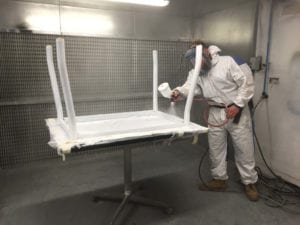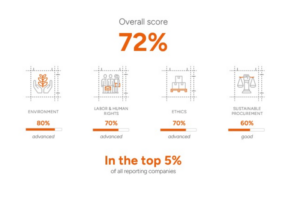Twelve steps to joining the circular economy
In an era in which the environment is increasingly a major focus for both business and politics, the phrase ‘circular economy’ is expected to be one to follow in 2020.
The phrase describes an alternative model to a linear business world in which goods are made, used and then disposed of.
In a circular economy, the focus is on a more resource-efficient way of doing things, one in which waste is eliminated and resources are used, recovered and then regenerated.

The basic principles make perfect sense in a world where global warming and climate emergency are regular talking points: use less, share more and make sure what you do has the potential to be re-used, re-purposed and recycled. But how should a business go about adopting circular economy principles?
The office itself is a good place to start because this is where so many resources are consumed – from IT to furniture, from energy to paper and stationery.
The first step, however, is a change of perspective from simply wanting to ‘look green’ to understanding that businesses in the 2020s need circularity for their own survival.
To truly embrace a circular economy, many companies will need to do more than evolve – they will need a revolution in the very fabric of the organisation.
But the opening questions are pretty simple:
“Do we really need it?”
“What is this made of? “
“What happens to it when we’re done with it?”

By designing out waste and pollution, keeping products and materials in use and regenerating natural resources, businesses can start to embrace circularity in the very place that defines them – the office.
Here are 12 tips to join the circular economy in your workplace:
- Put service and maintenance contracts in place, for example on electrical equipment, to increase lifespan, reduce future consumption of materials and, in the long term, reduce costs too.
- Rather than throwing out office furniture because it doesn’t fit or the style is wrong, have it refurbished and remodelled at a fraction of the cost of new. It could also be sold or donated for re-use.
- Consider partial replacement rather than a complete renewal of fixtures and fittings. For example, rather than removing an entire ceiling of tiles, replace the ones that are damaged or discoloured.
- Give fixtures such as old carpet tiles a new lease of life. They may no longer be the right look for the customer-facing areas but could easily be re-laid in storage areas, IT rooms. Less cost, less waste, more circular.
- Remember that the things you need to get rid of could live new lives elsewhere. Older office equipment might feel lacklustre, but a smaller business or charity would welcome the opportunity to use it.
- Consider that more effective space utilisation reduces the need for new buildings, which eat up resources. It can also help create jobs and growth. Spare space could be sublet or loaned to a start-up organisation in desperate need of a base.
- Think about whether buildings or sites could be fitted with renewable energy measures such as solar panels or wind turbines. These would allow the business to generate its own power, stop using fossil fuels and cut costs.
- Equip the workforce and office space in ways that ‘encourage’ circularity. This could include providing all staff with reusable coffee cups, or better food preparation areas to reduce takeaway packaging.
- Rather than buying brand new IT equipment consider quality factory refurbs. These can offer practically the same quality and longevity as new equipment for a fraction of the price – and the satisfaction that resources have been saved.
- Introduce more energy-efficient resources, such as LED lighting, which can decrease scope 2 emissions.
- Make recycling and waste management the focus when items do need to be disposed of. Businesses should send waste to facilities that promise to recycle a high percentage of what they receive.
- Ensure that all the business’ vehicles, whether purchased or leased, are low emission, to help reduce carbon emissions. In London, all vehicles need to be Ultra Low Emission Zone compliant. In order to reduce carbon emissions further, make all vehicles ULEZ compliant, no matter where they travel.
Crown Workspace, which recently acquired Premier Workspace Services, is an expert in workplace sustainability and a leading provider in circular office solutions. It helps businesses that are refurbishing, relocating or expanding, helping to reduce their impact on the environment. Clients include KPMG, Slater & Gordon, Tesco, Christie’s, Vodafone, UK Parliament, Home Office, Nomura, Nuffield Health, Ocado, and Metro Bank.
In 2016, Premier Workplace Services, acquired by Crown Workspace, won a Queen’s Award for Enterprise, the UK’s highest accolade for business success.
The award is in recognition of the sustainable office furniture services delivered by us and particularly for the Renew Centre, the UK’s only independent, commercial facility solely dedicated to remanufacturing, refurbishing and repairing desks, chairs and other office furniture.
Related stories
In this blog, we delve into workplace consultancy, exploring the intricacies of workplace change and space utilisation strategies and their profound implications for businesses.
Sustainability remains a top business priority for Crown in the UK & Ireland and globally; we are therefore delighted to have launched our 2023 UKI Sustainability Report!
Crown are delighted to announce that we have been awarded Gold by EcoVadis in 2024 for the second time, reflecting our commitment to and progress in becoming a responsible business.




















